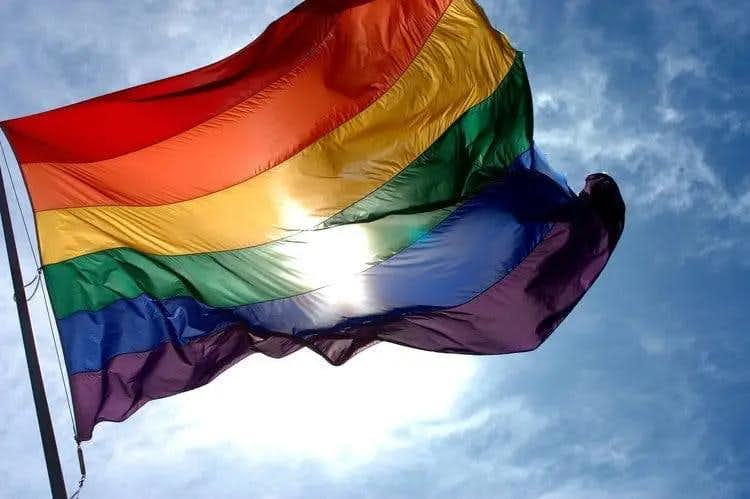August 25th, 2017

Prior to Alfred Kinsey’s acclaimed research on sexual behavior, it was commonly accepted that sexuality was a dichotomous concept. Kinsey and his team conducted thousands of interviews on people’s sexual behavior and created a heterosexual-homosexual rating scale ranging from exclusively heterosexual (0) to exclusively homosexual (6) with an additional category for those who did not report any sexual contacts or reactions (X). The Kinsey Reports, Sexual Behavior in the Human Male (1948) and Sexual Behavior of the Human Female (1953), disproved the belief that people are classified as either heterosexual or homosexual and suggested that human sexuality was a concept far too complex to be confined by checkboxes. Kinsey’s work was significantly ahead of his time. Over the past 70 years, his reports have influenced further research on gender studies and helped pave a path for new perspectives on sexuality. As the social perspective progresses, the verbiage used within the LGBTQ+ community continues to develop. New terms are coined while old terms evolve with different meanings to accurately conceptualize various sexualities and gender identities. For example, the term “homosexual” was formerly a clinical term to describe a person who is attracted to the same sex (as seen in Kinsey’s research). Presently, not only is the word outdated but it is considered derogatory. “Gay” or “lesbian” is now the preferred terms. Contrarily, the term “queer” was initially a negative way to describe members of the LGBTQ+ community throughout the majority of the twentieth century. In the late 1980s, there was a movement to reclaim the word and it is now regularly used by people who identify as sexual minorities, particularly LGBTQ+ youth. For older generations, “queer” may still carry significant negative connotations. Familiarity with updated terms is crucial for certain professions (i.e., mental health providers, teachers, doctors), however, it is also salient information for general society in order to establish social awareness, cultural sensitivity, equality, and respect. The following list outlines some of the precise languages that is used among the LGBTQ+ community: 1. Androgyne/Androgynous: a gender identity that is neither masculine nor feminine. The term is often used to describe a person’s physical appearance. 2. Asexual: describes a person who does not experience sexual attraction. Each person experiences asexuality differently meaning that they may still engage in sexual behavior or intimate relationships. Asexuality is not the same as celibacy or sexual abstinence, which are choices made by an individual. 3. Biphobia/homophobia/transphobia: a fear, hatred, or prejudice toward specific members of the LGBTQ+ community. 4. Cisgender: describes a person whose biological sex and gender identity are aligned. 5. Gender Expression: the way an individual communicates their gender which may or may not reflect their gender identity or sexual orientation. Gender expression is typically conveyed via physical attributes such as mannerisms, behaviors, clothing, hairstyle, etc. 6. Gender Fluid: a person who does not identify with a fixed gender. 7. Gender Identity: An individual’s core sense of identity on a spectrum that includes male, female, both, or neither. 8. Intersex: a term that describes individuals who are born with ambiguous genitalia or bodies that are neither male nor female. “Hermaphrodite” is the former clinical term to describe intersex individuals, which is no longer considered scientifically accurate or acceptable. 9. Preferred Gender Pronouns: appropriate pronouns for people who do not identify as either male or female. It is important to be conscientious of preferred pronouns to avoid making heteronormative assumptions when using pronouns such as he/she, him/her, and his/hers. LGBTQ+ individuals may prefer gender-specific or gender-neutral pronouns such as zie (replaces he or she) or hir (replaces his or her). When uncertain which pronoun to use, it is acceptable to respectfully ask. 10. Transgender: a general term used to describe an individual whose gender identity is not aligned with their biological sex and often differs from societal expectations. Transgender is a word associated with gender identity but does not reflect sexual orientation. Previously, it was common to refer to transgender individuals as “transvestites;” a term that is now outdated and derogatory. This list is only a portion of the LGBTQ+ terminology that is continuing to develop as society’s perspective on gender and sexuality becomes more progressive. For further information on developing cultural competency for this demographic visit organizations and websites that support the LGBTQ+ community and their allies: • Center on Halsted • Human Rights Campaign • PFLAG, uniting LGBTQ+ with families, friends, and loved ones • We Are Family, safe space for LGBTQI+ and ally youth
Kinsey, Alfred C. et al. (1948/1998). Sexual Behavior in the Human Male. Philadelphia: W.B. Saunders; Bloomington: Indiana U. Press. The University of Illinois at Springfield, Student Affairs Office. (2009). Continuum of Human Sexuality.
Our Services
Virtual/Online CarePHP and IOPAdult PsychiatryChild & Adolescent PsychiatryAdult TherapyChild & Adolescent TherapyCouples CounselingFamily TherapyGroup TherapyPsychological TestingTranscranial Magnetic Stimulation (TMS)